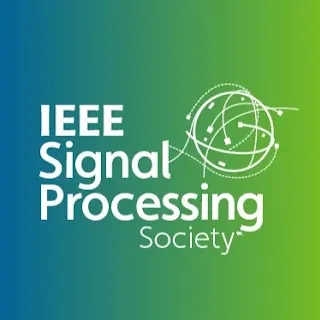Each year, the IEEE Board of Directors confers the grade of Fellow on up to one-tenth percent of the members. To qualify for consideration, an individual must have been a Member, normally for five years or more, and a Senior Member at the time for nomination to Fellow. The grade of Fellow recognizes unusual distinction in IEEE’s designated fields.
IEEE Fellows Directory - All SPS Fellows can be found here.

56 SPS MEMBERS ELEVATED TO FELLOW
Each year, the IEEE Board of Directors confers the grade of Fellow on up to one-tenth of one percent of the voting members. To qualify for consideration, an individual must have been a Member, normally for five years or more, and a Senior Member at the time for nomination to Fellow. The grade of Fellow recognizes unusual distinction in IEEE’s designated fields.
The Signal Processing Society congratulates the following 56 SPS members who were recognized with the grade of Fellow as of 1 January 2025:
Balu Adsumilli, for contributions to video processing and pervasive user-generated online video content
Tareq Al-Naffouri, for contributions to adaptive signal processing and applications to wireless communications
Waheed Uz Zaman Bajwa, for contributions to compressed sensing, communications, and machine learning in distributed systems
Paolo Braca, for contributions to advancements in networked surveillance systems
Liangliang Cao, for contributions to computer vision and speech recognition with significant industrial impacts
Pin-Yu Chen, for contributions to machine learning robustness and AI safety
Kyungwhoon Cheun, for leadership in 5G mmWave and vRAN technologies
Davide Dardari, for contributions to theory and practice of radio positioning systems
Tiago Falk, for contributions to cognitive computing for adaptive, context-aware human-machine systems
Tim Fingscheidt, for contributions to speech enhancement systems and their evaluation
Carlo Fischione, for contributions to the theory and practice of wireless internet of things
Sinan Gezici, for contributions to wireless localization and ultra-wideband systems
Nuria Gonzalez Prelcic, for contributions to millimeter wave wireless communications
Ran He, for contributions to face analysis and image synthesis
Mingyi Hong, for contributions to optimization in signal processing, wireless communication and machine learning
Jiankun Hu, for contributions to biometrics security and anomaly intrusion detection
Yongming Huang, for contributions to signal processing for mmWave and MIMO wireless communications
Roozbeh Jafari, for contributions to sensors and systems for digital health paradigms
Krzysztof Kulpa, for contributions to passive radar
Bennett Landman, for contributions to MRI harmonization and data-driven modelling in medical image processing
Sanghoon Lee, for contributions to the modeling of human visual perception and processing of visual signals
Jinyu Li, for contributions to deep-learning-based speech technology innovation and commercialization
Jiaying Liu, for contributions to intelligent visual compression and enhancement
Karen Livescu, for contributions to multi-view and pre-trained speech representation learning
Sebastien Marcel, for contributions to biometric presentation attack detection
Santiago Marco, for contributions to the use of signal processing and machine learning in chemical sensing systems
Vishal Monga, for contributions to computationally efficient image analysis and restoration
Pedro Moreno, for contributions to speech recognition and industrial-scale internationalization of automated speech processing
Debdeep Mukhopadhyay, for contributions to design and analysis of hardware security primitives
Timothy O’Shea, for contributions to deep learning for physical layer communications and sensing
Ram Bilas Pachori, for contributions to application of signal decomposition methods to biomedical engineering
Wen-Hsiao Peng, for contributions to the design and implementation of video coding algorithms and standards
Dai Qionghai, for contributions to 3D content understanding and computational imaging
Philip Rubin, for contributions in speech synthesis and analysis, neuroscience, and ethics of research and technology
Luca Sanguinetti, for contributions to signal processing of multi-antenna and multi-cell wireless communications
Michael Lewis Seltzer, for contributions to speech recognition
Abdallah Shami, for contributions to methods for virtualized networks and optical access design
Zhiguo Shi, for contributions to array signal processing with applications to UAV surveillance
Byonghyo Shim, for contributions to sparse signal processing and multi-antenna technology
Teruhiko Suzuki, for contributions to video coding for professional and consumer products
Thomas Szabo, for contributions to ultrasound education and establishing technical standards
Dong Tian, for contributions to 3D video compression, processing, and analysis
Gordon Wetzstein, for contributions to computational imaging and display systems
Liang Xiao, for contributions to learning based wireless security
Hongkai Xiong, for contributions to multi-scale multimedia signal representation, coding and communication
Wei Xu, for contributions to hybrid MIMO transceiver design and distributed optimization for wireless networks
Jie Xu, for contributions to wireless information and power transfer and unmanned aerial vehicle enabled wireless networks
Jianhua Yao, for contributions to computer aided diagnosis, computational genomics and healthcare AI product development
Lei Ying, for contributions to fast magnetic resonance imaging with sparse sampling
Mika Ylianttila, for contributions to mobility management and network security
Alessio Zappone, for contributions to the energy-efficient design of wireless communication networks
Heiga Zen, for contributions to generative model-based speech synthesis
Guangtao Zhai, for contributions to perceptual quality assessment and enhancement of visual media
Xinmiao Zhang, for contributions to error-correcting codes and VLSI implementations
Wanlei Zhou, for contributions to cyber security and privacy
Jie Zhou, for contributions to visual content recognition and search
Nominate an IEEE Fellow today!
IEEE Fellow is the highest grade of membership of the IEEE. It honors members with an outstanding record of technical achievements, contributing importantly to the advancement or application of engineering, science and technology, and bringing significant value to society. Around late November of every year, the new class of IEEE Fellows is announced. Hopefully, you will consider nominating someone this year! Anyone can be a nominator (no need to be an IEEE Fellow, or even an IEEE member). The nomination deadline is 7 February (11:59 p.m. US Eastern Time), and all required information (and an “electronic” nomination kit) can be obtained from www.ieee.org/fellows. Please note that a nominee must be an IEEE Senior Member or IEEE Life Senior Member in good standing, who has been an IEEE member for 5 years or more preceding 1 January of the elevation year. Self-nominations are not permitted. The IEEE and the Signal Processing Society would like to encourage more nominations from:
It helps to understand the elaborate review process. Nominations first obtain a technical evaluation by a relevant Society Fellow Reference Committee. This results in a rank-ordering (numerical grade) and brief essays (150-200 words) regarding the following questions:
- Underrepresented regions (e.g., Latin America, Asia, Africa)
- Underrepresented categories (Technical Leader, Educator, Application Engineer), as described below
- Other underrepresented categories, such as women.
Some hints for nominators Each year, SPS receives about 60-65 nominations, and IEEE a total of around 1000 and the number is climbing. About one third of the nominations are successful. While all pertinent information can be obtained from public IEEE websites (see in particular https://www.ieee.org/content/dam/ieee-org/ieee/web/org/govern/fellow_operations_manual.pdf), we would like to give some hints to improve the chances that a nomination will be successful. It helps to understand the elaborate review process. The submitted nominations first undergo a technical evaluation by a relevant Society Fellow Evaluation Committee. This results in a rank-ordering (based on numerical grade scores) of all the nominees and for each nomination a brief essay (150-200 words) regarding the following questions:
- What are the technical contributions? These can also be the development or application of products, systems, facilities, services or software. List not more than two, and focus on outstanding, innovative and creative contributions.
- What is the evidence supporting the claims? These are usually published papers, patents, standards, developed courses and textbooks. Further evidence can be awards and the number of citations to publications, but can also be news reports, web sites, etc. that discuss the work of the candidate. What is the role of the nominee in the contributions?
- What is the importance of the contribution? What is its lasting impact on the profession and the society? The impact must be actual/evident, not potential. Who has adopted the contribution, has it influenced other work, has it opened new avenues of research? Keep in mind that citation numbers can raise questions but do not provide answers.
The essays, rank ordering and score go to the IEEE-level Fellow Committee. The committee is partitioned into small groups, and the nomination forms are randomly distributed over the groups. Each nomination is then scored on four categories. The Society score and rank-ordering is one category, but it counts for only 25% of the total. The main category is Technical Accomplishment (40%). Since the IEEE-Level groups are not necessarily experts in the nominees' subfields, they will be informed by the Society Committee essays, so these essays play an important role. The remaining categories are the attached references letters from 3-5 IEEE Fellows (15%), professional activities (10%), and years in the profession (10%). From this process, it is important to realize that the majority of reviewers are non-experts on the work of a nominee. Nomination forms should be written with this in mind! Therefore, it is crucial to focus on clear, tangible contributions as well as evidence, and equally important is their impact on society. Clear essays by the Society Committees are very important as well, so please help the committee members by making the required input for these essays readily (and compactly) available in the nomination form. The Society Committees do not see the Fellow-grade reference letters, as these go directly to the IEEE-level Fellow Committee. Thus, these letters should be written to impress non-experts, and also the stature of the referee should be briefly pointed out. This also means that the nominator and nomination form play a critical role at the society evaluation stage. In addition, the Society Committees do have access to endorsement letters (up to three are allowed and do not have to be written by IEEE Fellows). Endorsement letters are particularly important in clarifying an individual’s specific contributions as part of a team effort (e.g., in industry) and impact on commercialization, standardization, product development, or education. Finally, while many of us are familiar with nominations related to outstanding academic contributions (these go to the category “Research Engineer/Scientist”), there are three other submission categories with equal recognition:
- Educator, e.g., for writing an accepted and widely used pioneering textbook, or for the development of a new curriculum or courses that are innovative or unique (with lasting impact on engineering education);
- Application Engineer/Practitioner, for product, process, or standards development, for significant technical contributions in the design and evolution into manufacturing of products or systems;
- Technical Leader, responsible for a managerial, team, or company-wide effort using technical innovation, and resulting in outstanding performance, economic enhancements, or other advantages that benefit society.
In each case, the contributions are to be judged on the basis of uniqueness, innovation, and wide acceptance. For the latter categories, it is important that the nominator points out clearly what the individual’s technical contribution was to a group effort. In addition, you should add what were the specific technical contributions that the nominee made, which made the achievement possible.
Please submit your nomination no later than 7 February. Again the online nomination form can be found at http://www.ieee.org/membership_services/membership/fellows/fellows_nomination.html. Questions on the IEEE Fellow nomination process should be sent to fellows@ieee.org.
There are many deserving members of the Signal Processing Society. We encourage you to help them get the recognition that comes with being an IEEE Fellow.
